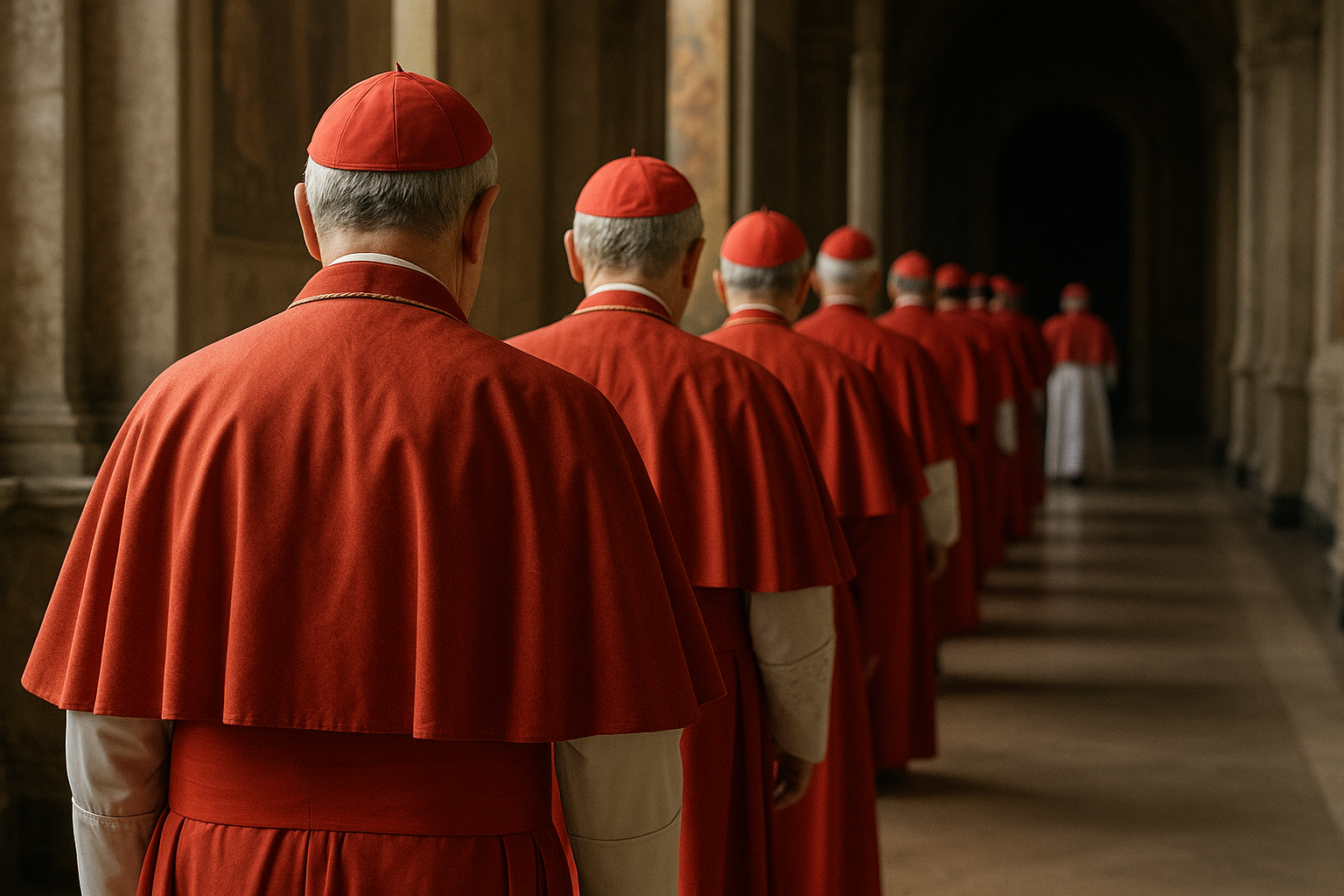Those who therefore assume the government of souls make themselves servants of God's servants.
Gregory the Great, Regula Pastoralis
The moment the papal see becomes vacant, the entire machinery of the Catholic Church kicks into action to begin one of the most solemn, ritualized and observed procedures in the world: the election of a new pope. For centuries, this has been done through the conclave, a closed-door meeting in which the cardinal electors vote to designate Peter's successor.
But how does this process actually work? How many cardinals participate? What stages punctuate it? And how do they get to the announcement that millions eagerly await: Habemus Papam? Here is a summary of the various vessels that lead to the proclamation of the new pontiff:
Phase 1
Vacant See
Conclave begins only when the Apostolic See officially becomes vacant, that is, after the death or resignation of the Pope. At this time, the Church's Camerlengo certifies the vacancy of the papal throne and assumes management of ordinary affairs. All other heads of dicasteries lapse. The Church enters a phase of waiting and preparation in which the central government is suspended except for essential functions.
Phase 2
General Congregations
In the following days, general congregations are held, meetings attended by all cardinals (not just electors). In these assemblies, the current situation of the Church is discussed, the profiles of possible candidates are evaluated, and the opening date of the conclave is set. The cardinal electors, that is, those who are under 80 years of age, are housed in the residence of Casa Santa Marta inside the Vatican. From this time they prepare to enter seclusion.
Phase 3
Entry into Conclave
On the appointed day, the cardinals go in procession to the Sistine Chapel, singing the hymn “Veni Creator Spiritus” to invoke the Holy Spirit. Once inside, the solemn formula “Extra omnes!” is pronounced, forcing the exit of all unauthorized persons and sanctioning the beginning of the seclusion. From that moment, the cardinals can no longer communicate with the outside: the cloister is total and strictly guarded. The Sistine Chapel is reclaimed from any possible means of communication or eavesdropping.
Phase 4
Voting
The first ballot can take place as early as the afternoon of the same day. Up to four daily ballots are held on the following days, two in the morning and two in the afternoon. Each cardinal writes the candidate's name on a ballot, which is folded, counted and read by three cardinal tellers. To be elected pope, a candidate must get two-thirds of the vote. After each vote, the ballots are burned in a stove, generating the famous smoke that signals the outcome: black if no one was elected, white if a quorum was reached.
Phase 5
Acceptance and Pontifical Name
When a candidate reaches the required majority, he is asked the formal question: “Do you accept the canonical election as Supreme Pontiff made upon you?”. If he accepts, he is then invited to choose the name by which he will be known as Pope. The newly elected is dressed in the traditional white robe and spends a few minutes in the so-called Room of Tears, a small private room in which to gather before showing himself to the world.
Phase 6
Proclamation and Blessing
After the election, the Cardinal Protodeacon appears from the Loggia of Blessings of St. Peter's Basilica to announce to the world: “Habemus Papam!”. A few moments later, the new Pope presents himself publicly for the first time and imparts the blessing "Urbi et Orbi", the sign of the official beginning of his pontificate.
In this article, we will explain step by step and in more detail the procedure for electing the Pope, from the moment of the death or resignation of the outgoing pontiff until the official proclamation from the loggia of St. Peter's Basilica.

The Vacant Seat: What Happens When a Pope Dies (or Resigns)
The process of electing a Pope cannot begin until the apostolic see is officially vacant. This can happen in two ways:
- Upon the death of the Pope, certified by the Camerlengo (the cardinal who administers the vacant see)
- Upon resignation, as in the case of Benedict XVI in 2013
Once the seat is declared vacant, a transitional period known as the “interregnum” begins, during which:
- All department heads are dismissed;
- Ordinary affairs are handled by the general congregations of cardinals;
- No decisions of government can be made.
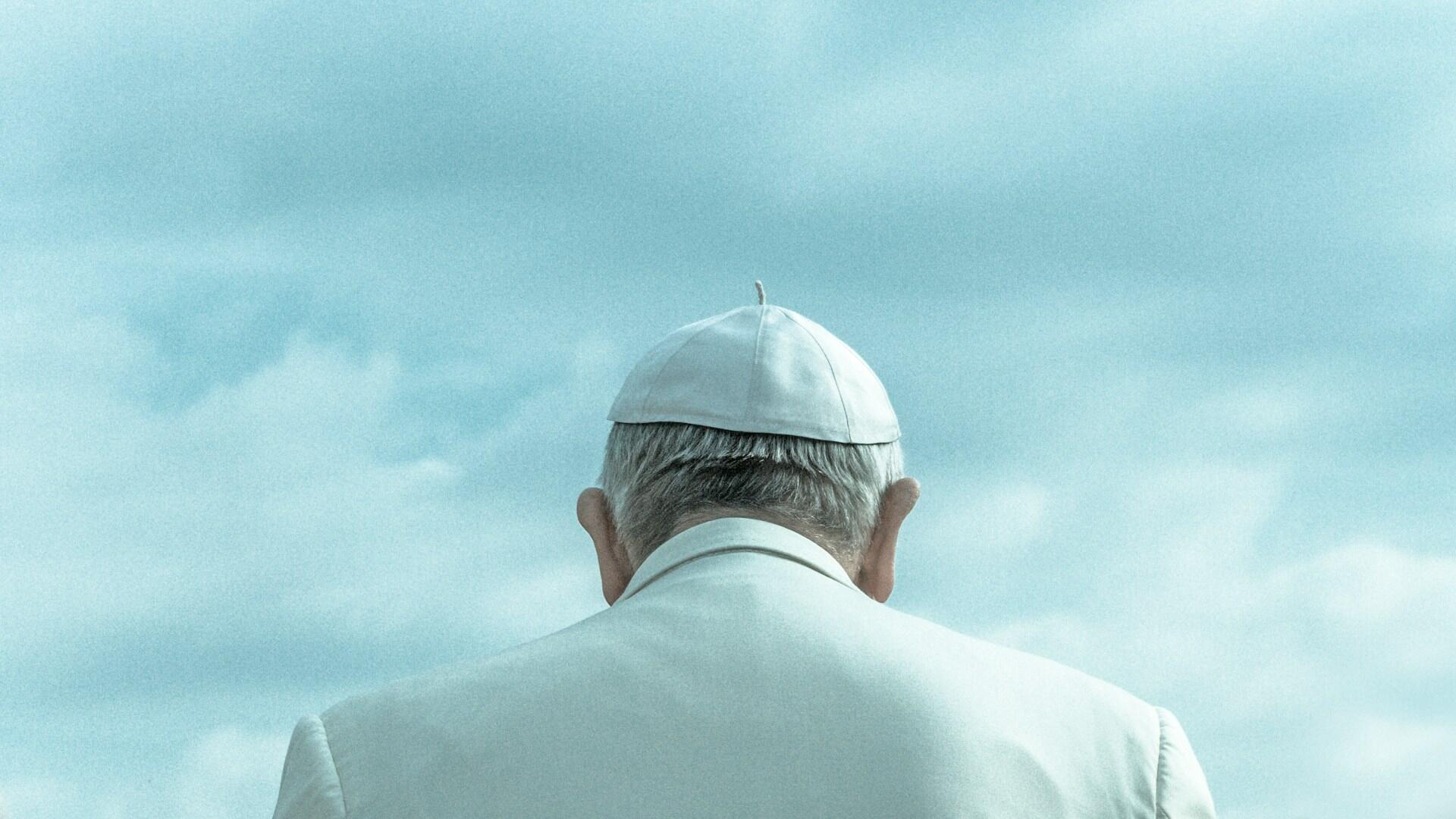
The College of Cardinals meets in preparatory assemblies (congregations), during which the situation of the Church is discussed, profiles are evaluated, and the start of the conclave is planned.
Entry Into the Conclave: Seclusion, Oaths, and the Sistine Chapel
The date of the conclave is set between the 15th and 20th day after the vacancy of the see. On the appointed day, the cardinals attend the Mass “Pro Eligendo Papa” in St. Peter's Basilica, presided over by the Dean of the College of Cardinals.
Afterwards, the cardinal electors (those under the age of 80) move to Casa Santa Marta, a residence within the Vatican specially dedicated to the conclave. From there, in solemn procession, they make their way to the Sistine Chapel, singing the traditional Veni Creator Spiritus, invoking divine inspiration.
Only cardinals of the Catholic Church who, at the time of the death or resignation of the Pope, have not yet reached the age of 80 may vote in the conclave. Their number is set at a maximum of 120 electors. As a rule, all cardinal electors are also bishops, but this is not a strictly mandatory requirement under canon law. The right to vote derives from the dignity of the cardinalate, not from episcopal ordination. Electors must be physically present in the Vatican and free from serious impediments to participate validly in the voting.
Once inside the chapel, one of the most solemn moments takes place: the Master of Ceremonies exclaims “Extra omnes!” and the doors are closed. The cardinals remain completely isolated from the outside world for the duration of the conclave. This ritual has a very ancient history, dating back to the 12th century.
Closure and secrecy
- It is forbidden to bring electronic devices, notes, or communication materials;
- The area is screened and cleared to prevent interception;
- The cardinals solemnly swear to maintain absolute secrecy about what happens inside.
In the event of illness, a cardinal may be assisted by a nurse chosen by the commission of cardinals, who is also bound by an oath of secrecy.
Voting: Majorities, Ballots, and Smoke Signals
Once the conclave has begun, the first vote takes place in the afternoon of the same day or, at the latest, the following morning. Voting takes place up to four times a day: twice in the morning and twice in the afternoon, with intervals for reflection and prayer.
Voting Procedure
Each cardinal receives a ballot paper on which he writes the name of his chosen candidate in Latin, maintaining the utmost secrecy. The ballot papers are folded and placed in a silver urn in the center of the Sistine Chapel.
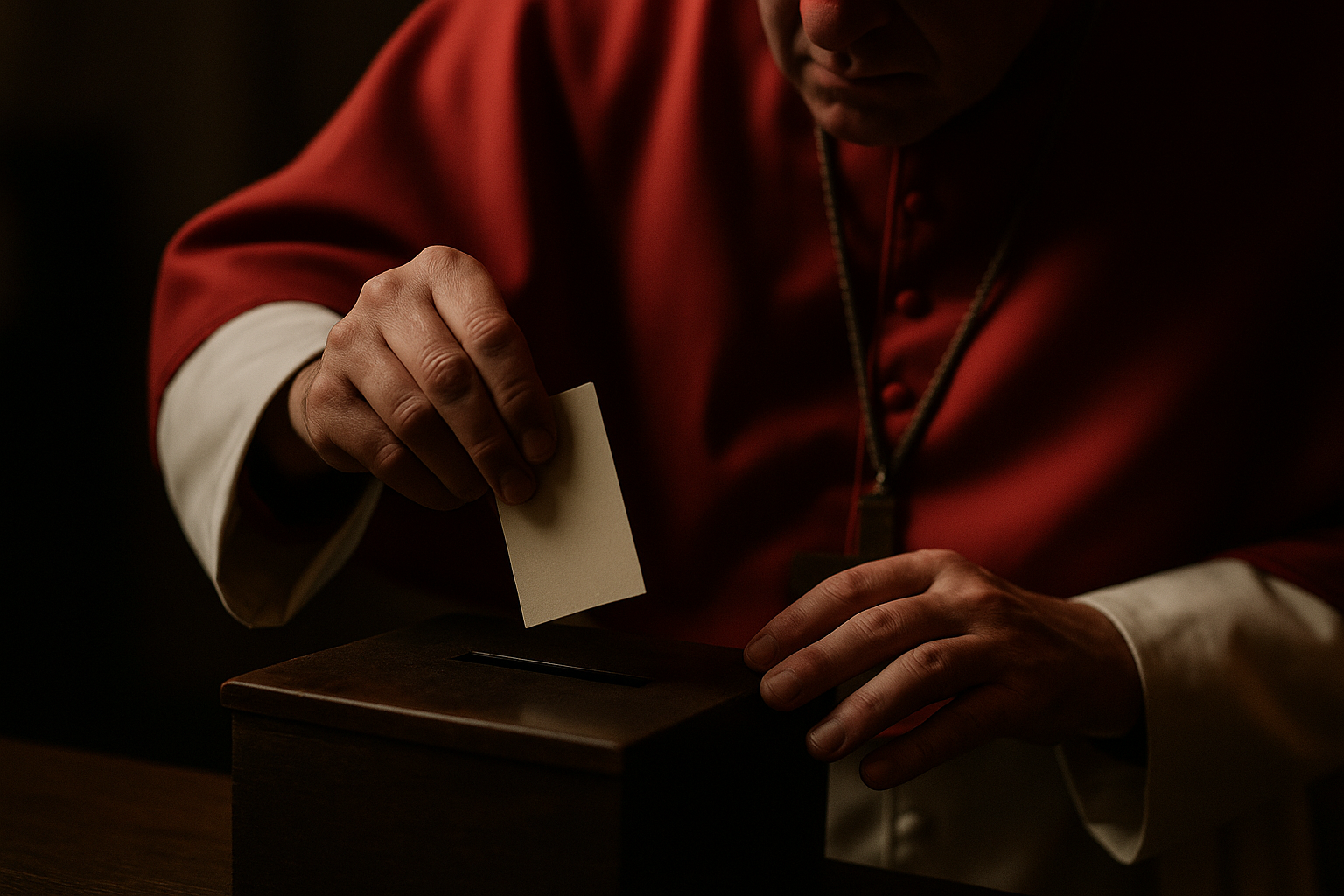
Three cardinals — scrutineers — are responsible for:
- Counting the ballots
- Reading aloud the names written
- Verifying the validity of the vote
- Recording and sealing the results
All this takes place under the supervision of three reviewers and with the help of three nurses, who are responsible for collecting the votes of any cardinals who may be ill in the residence.
The Quorum
To be elected Pope, a candidate must obtain a qualified majority of two-thirds. With 120 electors, this means at least 80 votes. If no candidate reaches this threshold, further ballots are held.
Only after numerous unsuccessful rounds—and only in special circumstances—can a change to the quorum be considered, but this requires the unanimous approval of the cardinals and compliance with the rules in force.
The Smoke
After each ballot, the ballots are burned in a stove. This is accompanied by a second burner with chemical additives, which, if:
No agreement has been reached and no Pope has been elected.
The quorum has been reached and there is a new Pope.
On average, the last conclaves lasted three days before the election of the new pope.
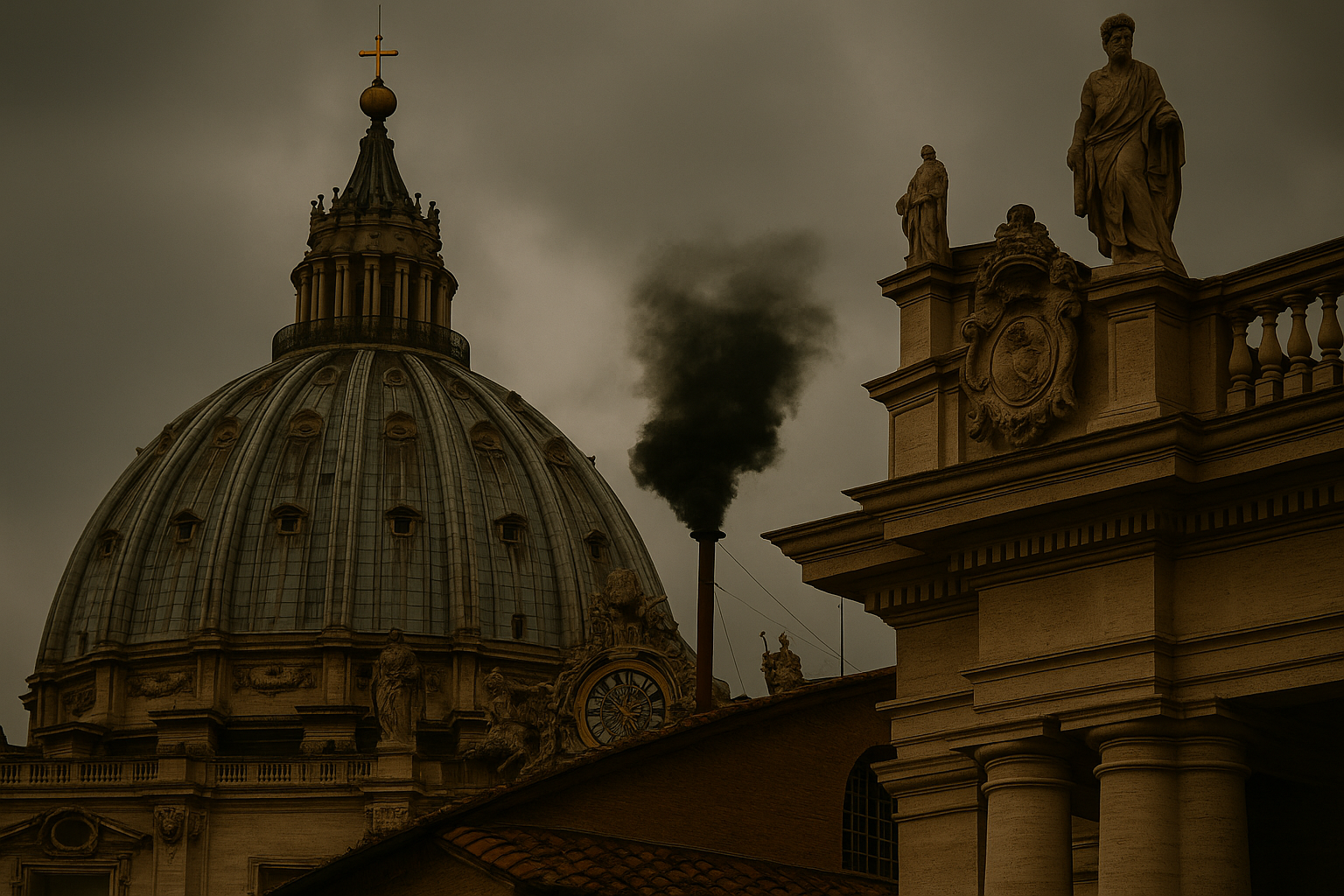
What happens when a majority is reached and a candidate is elected? Read on to find out the step-by-step procedure.
From the Proclamation to the Habemus Papam: The Announcement Ritual
When a candidate reaches the required majority and accepts the election, the Dean of the College of Cardinals asks him the historic question:
“Do you accept your canonical election as Supreme Pontiff?”
If the answer is yes, he continues with:
“By what name do you wish to be called?”
At that point, the newly elected pope is accompanied to the Hall of Tears, where he dons the white cape for the first time. The hall takes its name from the moment of emotion and solitude that many newly elected popes experience when faced with the immensity of the responsibility they have received.
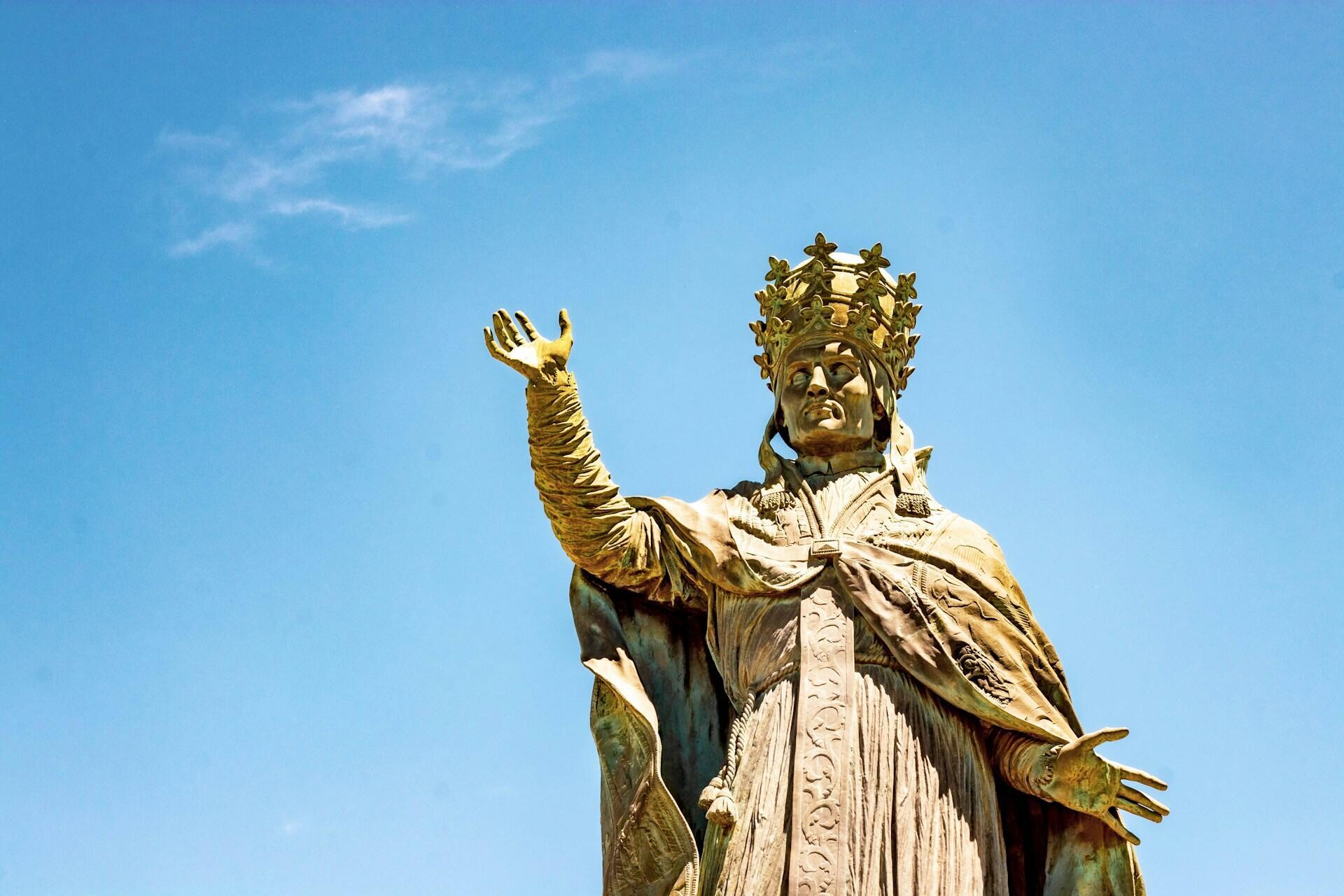
Immediately afterwards, he appears in the Loggia delle Benedizioni of St. Peter's Basilica. The cardinal protodeacon announces:
“Annuntio vobis gaudium magnum: Habemus Papam!”
The civil name and pontifical name of the new Pope are pronounced. A few minutes later, the pontiff presents himself to the faithful, pronounces the first blessing “Urbi et Orbi” and officially begins his pontificate.
The first Pope to pronounce the blessing in Italian was John Paul II, in 1978, breaking with the tradition of Latin to greet the people in the language of the host country.
Latin is still very present during the ceremony: it is not only the liturgical language, but also the code that marks the most solemn and irrevocable passages. Here are some of the key expressions that define this unique rite:
- “Habemus Papam!” – “We have a Pope!”: the announcement awaited by millions of faithful around the world, proclaimed from the central balcony of St. Peter's Basilica.
- “Extra omnes!” – “All outside!”: this is the order that marks the beginning of the conclave. It is pronounced by the Master of Pontifical Celebrations to ensure that all outsiders leave the Sistine Chapel. The conclave begins.
- “Veni, Creator Spiritus” – “Come, Creator Spirit”: this is the hymn with which the cardinals invoke the Holy Spirit before beginning the voting, asking for light and discernment.
- “Eligo in Summum Pontificem...” – “I elect as Supreme Pontiff...”: this is the formula written by the cardinals on the ballots during the secret vote.
- “Acceptasne electionem de te canonice factam in Summum Pontificem?” – “Do you accept the canonical election as Supreme Pontiff made upon you?” This is the formal question asked of the cardinal elected, immediately after the necessary quorum has been reached.
- “Quo nomine vis vocari?” – “By what name do you wish to be called?”: the next question, which officially opens the new pontificate.
Generally speaking, yes: a pope can freely choose his own name at the time of election. There are no formal rules or canonical obligations binding him to specific names or a pre-established list. However, there are some unwritten customs that influence the choice:
Tradition: Popes tend to choose names already used by predecessors they admire or wish to evoke (e.g., John Paul I and II, Benedict XVI, Francis).
Symbolic meaning: The name may indicate the program or spirit with which they intend to lead the Church (e.g., “Francis” in reference to St. Francis of Assisi).
Sobriety: Names that are too unusual, mythological, or foreign to Christian tradition are generally avoided.
That said, there is nothing theoretically preventing a pope from choosing a name that has never been used before—as John Paul I did in 1978—or from inventing a completely new one.
The election of the Pope is one of the most solemn and complex processes in the life of the Catholic Church. Behind the age-old ritual of the conclave lies a delicate balance between spiritual discernment, historical responsibility, and the human dimension. Every gesture—from the cloister to the vote, from the smoke to the proclamation—is part of a liturgy that unites past and present, dogma and dialogue, silence and voice.
Understanding how the Pope is elected means getting closer to the very structure of the Church, but also to the heart of its spiritual identity. And perhaps, in a world of speed and instant news, the conclave remains one of the last places where decisions are made through listening, slowly, in the mystery of the choice.

